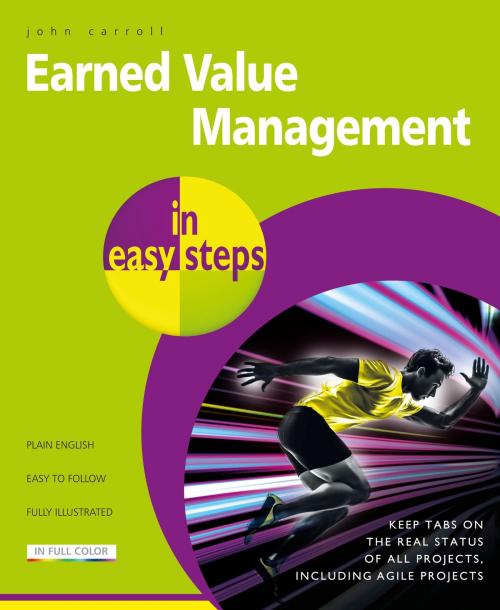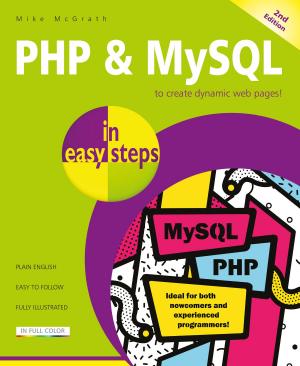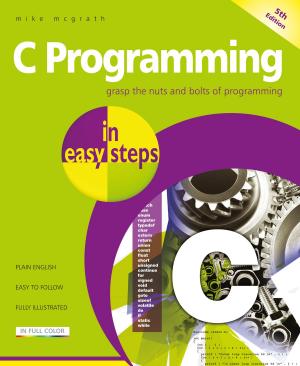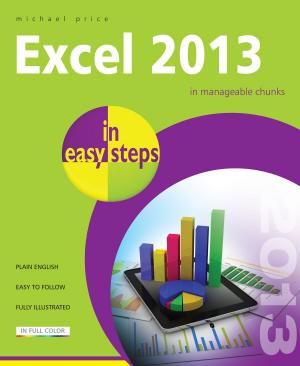Earned Value Management in easy steps
Keep tabs on the real status of all projects, including agile projects
Business & Finance, Management & Leadership, Management, Nonfiction, Computers| Author: | John Carroll | ISBN: | 9781840787801 |
| Publisher: | In Easy Steps Limited | Publication: | October 4, 2017 |
| Imprint: | In Easy Steps | Language: | English |
| Author: | John Carroll |
| ISBN: | 9781840787801 |
| Publisher: | In Easy Steps Limited |
| Publication: | October 4, 2017 |
| Imprint: | In Easy Steps |
| Language: | English |
Measuring Project Progress
What we are concerned with in project management has been defined as the Iron Triangle of: Time, Cost and Scope. Traditional project management methodology tends to focus on time and cost, as scope is fixed, isn’t it? But the way progress is typically reported is through the Gantt (or bar) chart, and in particular a tracking Gantt chart illustrates where a project currently is against the schedule. Also typically, the accounts department will produce reports on cost against budget, but this just shows what we have spent up to the last accounting period against the total budget. But this doesn’t really tell us exactly where we are in terms of progress today and where we will be at the end of the project. And that is precisely why Earned Value Management was developed.
Earned Value Management
Earned Value Management (EVM) helps us to determine the real status of a project. As well as telling us how much time and money we have spent, it also shows us how much we have achieved. Further, it tells us how much we still need to do and provides a good indication of final costs and expected completion dates of the project.
EVM builds on, and therefore supports good project management practice and underpins good corporate governance. Its introduction can drive the cultural and organizational change key to supporting these objectives. In summary:
It provides an objective measurement of what has been achieved on a project
It enables accurate forecasting
It provides project management information in a format that is easy for all stakeholders to understand and act upon
It provides an early warning of problems, which allows the timely identification and analysis of progress and cost issues and corrective actions to be identified
It shows stakeholders whether they’re getting value for money
It enables detailed project comparisons across programs and portfolios
It can be scaled to fit projects of all sizes and complexities
It has the ability to combine measurements of scope, time and cost (the Iron Triangle) in a single integrated system
In summary EVM provides a set of metrics that will enable you to accurately report on project progress to date and to completion.
In addition, research has shown that the areas of planning and control are significantly improved by the use of EVM; and similarly, using the methodology improves both scope definition as well as the analysis of overall project performance. Finally it has shown that the use of EVM is a positive predictor of project success.
Earned Value Management in easy steps covers:
Introduction to EVM
Key Elements of EVM
EVM Project Life Cycle
EVM Planning
Using EVM
EVM Reporting
EVM Criteria
EVM Lite
Glossary of EVM Terms
Measuring Project Progress
What we are concerned with in project management has been defined as the Iron Triangle of: Time, Cost and Scope. Traditional project management methodology tends to focus on time and cost, as scope is fixed, isn’t it? But the way progress is typically reported is through the Gantt (or bar) chart, and in particular a tracking Gantt chart illustrates where a project currently is against the schedule. Also typically, the accounts department will produce reports on cost against budget, but this just shows what we have spent up to the last accounting period against the total budget. But this doesn’t really tell us exactly where we are in terms of progress today and where we will be at the end of the project. And that is precisely why Earned Value Management was developed.
Earned Value Management
Earned Value Management (EVM) helps us to determine the real status of a project. As well as telling us how much time and money we have spent, it also shows us how much we have achieved. Further, it tells us how much we still need to do and provides a good indication of final costs and expected completion dates of the project.
EVM builds on, and therefore supports good project management practice and underpins good corporate governance. Its introduction can drive the cultural and organizational change key to supporting these objectives. In summary:
It provides an objective measurement of what has been achieved on a project
It enables accurate forecasting
It provides project management information in a format that is easy for all stakeholders to understand and act upon
It provides an early warning of problems, which allows the timely identification and analysis of progress and cost issues and corrective actions to be identified
It shows stakeholders whether they’re getting value for money
It enables detailed project comparisons across programs and portfolios
It can be scaled to fit projects of all sizes and complexities
It has the ability to combine measurements of scope, time and cost (the Iron Triangle) in a single integrated system
In summary EVM provides a set of metrics that will enable you to accurately report on project progress to date and to completion.
In addition, research has shown that the areas of planning and control are significantly improved by the use of EVM; and similarly, using the methodology improves both scope definition as well as the analysis of overall project performance. Finally it has shown that the use of EVM is a positive predictor of project success.
Earned Value Management in easy steps covers:
Introduction to EVM
Key Elements of EVM
EVM Project Life Cycle
EVM Planning
Using EVM
EVM Reporting
EVM Criteria
EVM Lite
Glossary of EVM Terms















